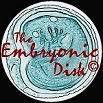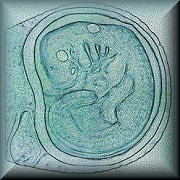| Study tools
: 2
Animations and
self-assessment
Animations:
the flexibility of ToolBook allows us to go beyond the text, diagrams
and photographs found in printed books to offer animations of
developmental processes.
Many sequences,
such as those showing embryonic folding and neurulation, heart
folding and palatal closure, appear in viewers with reversible
‘video’ controls and time-lines.Other
animated diagrams move spontaneously as soon as they are visible.
Animations
include:
- Lacunar
flow in the early placenta
- Migration
of epiblast cells in gastrulation
- Primitive
streak, notochord, neural plate
- Folding
of the primitive heart tube
- Longitudinal
folding of the embryo (day 14-35)
- Lateral
folding and somite dispersal
- Remodelling
of the primitive pharynx
- Cell cycle
mini-game: why are germ cells immortal?
- Migration
of primordial germ cells
- Maturation
of ovarian follicles
- Thyroid
migration and remodelling of pharyngeal pouches
- Elongation
of posterior lens fibres
- Formation
of the secondary palate
- Splitting
an opening by intussusception
- Ascent
of the kidney
- Rotation
of the ventral pancreatic bud
Self-assessment
questions:
'The Embryonic Disk' includes a bank of over 1600 true/false question-pairs
and associated explanations on gametogenesis, early development,
organ and systems development and the germ line.
Topic and
level are set by the student. Twenty questions at a time are chosen
at random from a larger set, using a different ‘seed’
each time, and either a true or a false statement is presented
for each question, again at random.
For
teaching staff: the questions are based on a well-established
bank developed by us for use at UCL, and they use a confidence-assessment
approach to scoring that we have found to be valuable in helping
students reflect on their knowledge. These questions may be copied
and used for assessment purposes on certain easy-to-meet
terms and conditions.
|


